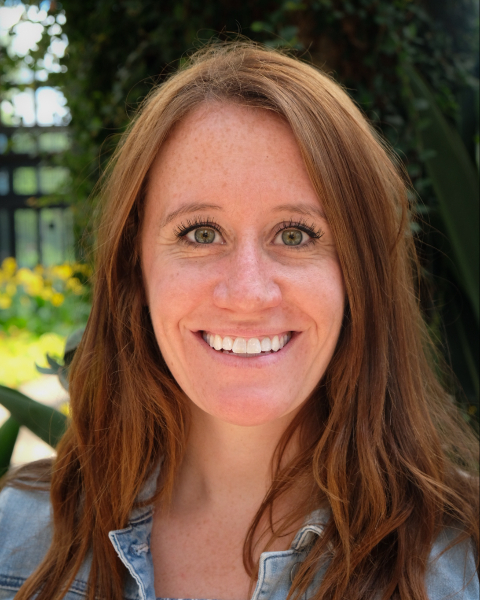PQA 10 - PQA 10 Head & Neck Cancer and Health Services Research/Global Oncology Poster Q&A
3644 - Radiotherapy (RT) Treatment Patterns Among Patients Treated Definitively for Primary Breast Cancer at a Major Cancer Center in Rwanda
Wednesday, October 2, 2024
10:30 AM - 11:45 AM ET
Location: Hall C
Screen: 31

Keara English, MD
Johns Hopkins Radiation Oncology Kimmel Cancer Center
Baltimore, MD
Presenter(s)
K. K. English1, K. Vincent2, I. Mutetiwabo2, P. Vikraman3, S. Lazieh3, A. Narang4, M. B. Roumeliotis5, and F. Rubagumya6; 1Department of Radiation Oncology and Molecular Radiation Sciences, Johns Hopkins Medicine, Baltimore, MD, 2Rwanda Cancer Center/Rwanda Military Hospital, Kigali, Rwanda, 3Johns Hopkins Hospital, Baltiomore, MD, 4Department of Radiation Oncology, Johns Hopkins University School of Medicine, Baltimore, MD, 5Johns Hopkins University, Baltimore, MD, 6Rwanda Cancer Center, Kigali, Dar es Sal, Rwanda
Purpose/Objective(s): To report on patient characteristics and external beam radiotherapy treatment patterns among patients treated definitively for primary breast cancer at a major cancer center in Rwanda since the inception of the cancer center. Materials/Methods: The cohort included patients receiving radiotherapy for primary breast cancer from 8/2018 to 1/2024 at a major cancer center in Rwanda. All patients received external beam radiation (EBRT) in the form of volumetric arc therapy (VMAT) in the definitive setting. Patients received systemic therapy in either the neoadjuvant or adjuvant setting at the discretion of the treating teams. Patient characteristics, prognostic markers, and treatment patterns and fractionation regimens, were identified and analyzed.
Results: 290 patients met inclusion criteria. Median age was 52 years (range 25 – 95 years). 143 (49%) tumors were left breast and 147 (51%) were right breast. Median distance traveled to and from the hospital for care was 47km (range 10km-1100km). 8.5% of patients held private health insurance only, another 8.5% of patients had a combination of public and private insurance, and the majority of patients (83%) were solely publicly insured. The median number of children per patient was 4, median weight in kg was 70.5, and median age at menarche was 15 years.166 (57%) patients were status post mastectomy and underwent chest wall RT. Of these patients, 157 (95%) also underwent lymph node RT. There were 123 (42%) patients post breast conserving surgery who underwent whole breast RT. Of the patients treated with whole breast RT, 80 (65%) patients also underwent lymph node RT. Additionally, 34 (28%) of these patients underwent tumor bed boost as part of the whole breast RT regimen. Of the 290 total patients, 1 underwent axillary RT only (0.3%). Regarding fractionation regimen, 223 (77 %) patients received 50 Gy in 25 fractions, 58 (20%) patients received 40-42 Gy in 15-16 fractions, and 9 (3%) patients received 16-32 Gy in 5-10 fractions.
Conclusion: Our institution is a critical resource for cancer treatment in the region. Over half of our primary breast cancer patients present in the post-mastectomy setting. Most patients with primary breast cancer who present to this center underwent standard fractionation treatment regimens with regional nodal irradiation.
Purpose/Objective(s): To report on patient characteristics and external beam radiotherapy treatment patterns among patients treated definitively for primary breast cancer at a major cancer center in Rwanda since the inception of the cancer center. Materials/Methods: The cohort included patients receiving radiotherapy for primary breast cancer from 8/2018 to 1/2024 at a major cancer center in Rwanda. All patients received external beam radiation (EBRT) in the form of volumetric arc therapy (VMAT) in the definitive setting. Patients received systemic therapy in either the neoadjuvant or adjuvant setting at the discretion of the treating teams. Patient characteristics, prognostic markers, and treatment patterns and fractionation regimens, were identified and analyzed.
Results: 290 patients met inclusion criteria. Median age was 52 years (range 25 – 95 years). 143 (49%) tumors were left breast and 147 (51%) were right breast. Median distance traveled to and from the hospital for care was 47km (range 10km-1100km). 8.5% of patients held private health insurance only, another 8.5% of patients had a combination of public and private insurance, and the majority of patients (83%) were solely publicly insured. The median number of children per patient was 4, median weight in kg was 70.5, and median age at menarche was 15 years.166 (57%) patients were status post mastectomy and underwent chest wall RT. Of these patients, 157 (95%) also underwent lymph node RT. There were 123 (42%) patients post breast conserving surgery who underwent whole breast RT. Of the patients treated with whole breast RT, 80 (65%) patients also underwent lymph node RT. Additionally, 34 (28%) of these patients underwent tumor bed boost as part of the whole breast RT regimen. Of the 290 total patients, 1 underwent axillary RT only (0.3%). Regarding fractionation regimen, 223 (77 %) patients received 50 Gy in 25 fractions, 58 (20%) patients received 40-42 Gy in 15-16 fractions, and 9 (3%) patients received 16-32 Gy in 5-10 fractions.
Conclusion: Our institution is a critical resource for cancer treatment in the region. Over half of our primary breast cancer patients present in the post-mastectomy setting. Most patients with primary breast cancer who present to this center underwent standard fractionation treatment regimens with regional nodal irradiation.
